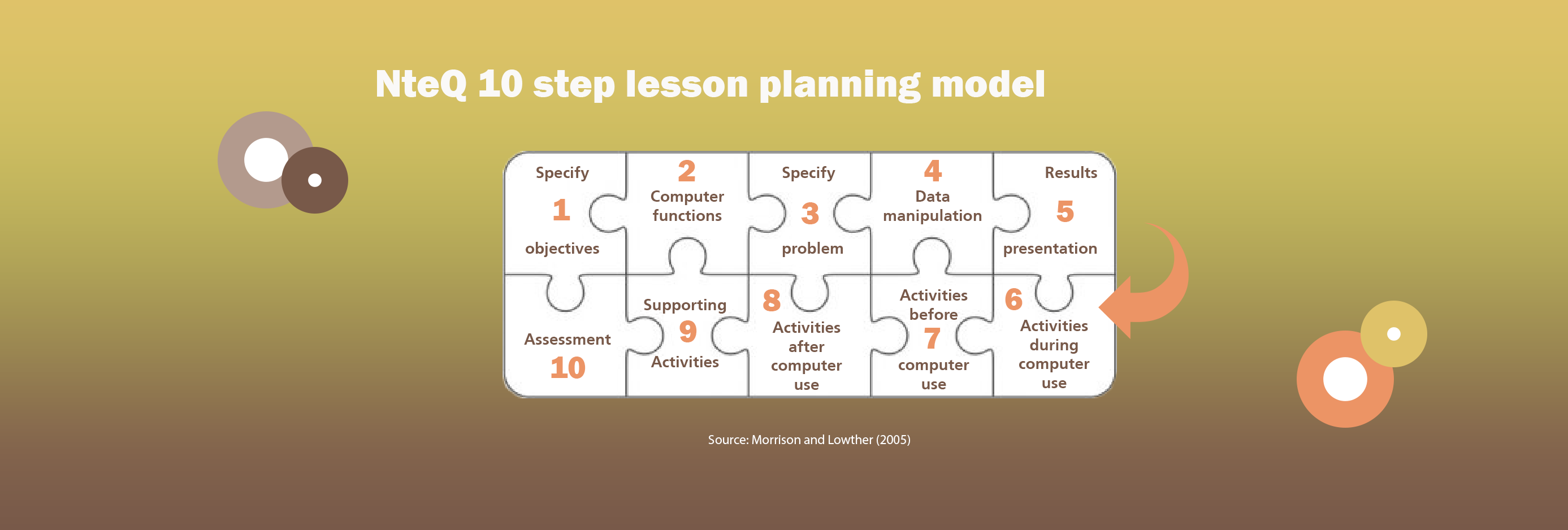General


The aim of this module is to acquire expertise in supporting teachers in the management of ICT classroom environments.
By the end of this module, participants should:
Review the module 6 resources below.
An ICT classroom environment can be created by one or more of the following digital devices:
The key to using these digital devices is to ensure that the students receive maximum learning benefit with this use of technology.
Review the resource below which goes into detail of incorporating ICT into classrooms in sub-Saharan Africa.
Below is an image taken from the full article which details the NteQ ten step lesson plan model:

To summarise, watch the video below. Although it is a little dated, it does provide some salient and practical points on integrating technology into your classroom.
Using the NteQ model, prepare an integrated ICT lesson (any digital device can be chosen). Remember that the use of ICT must be integrated into the pedagogy in such a way that the pedagogy is enhanced by the use of ICT.
Submit your lesson plan by using the assignment submission tool.
According to Oxford Languages, netiquette is 'the correct or acceptable way to use the internet'.
Watch the video below which highlights some key 'netiquette' points.

Use the link below to access the module 6 synchronous meeting. This online meeting will take place at Date | Time. Note: Your attendance is compulsory.